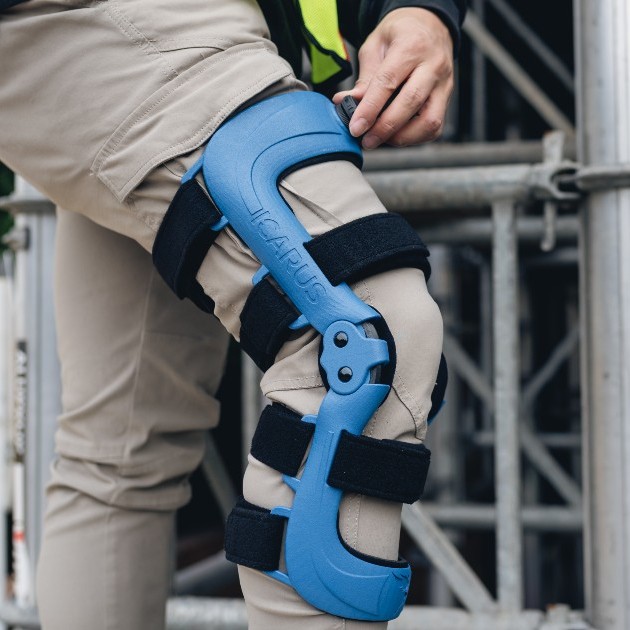Knee pain caused by injury or arthritis is uncomfortable and can significantly limit your ability to carry out your normal daily activities. If regular treatment is ineffective, several knee injections can help alleviate knee pain and restore mobility.
This article describes all the various knee injections available to those who suffer from knee pain, including steroids, gel shots, stem cell injections, cytokines, and more. If you recently sustained a knee injury or suffer from chronic knee pain, talk to your doctor about whether injections are worthwhile for you and what types of injections would work best.
Steroid Knee Injections
A steroidal knee injection, commonly referred to as a cortisone shot, is one of the most popular knee injections used to treat knee pain caused by rheumatoid arthritis. Additionally, they are frequently used to treat pain caused by osteoarthritis.
A steroid knee injection works as a potent anti-inflammatory to reduce swelling in the knee, relieve pain, and restore flexibility. Although they cannot cure arthritis, they are incredibly effective in treating the most common symptoms of arthritis, such as pain and inflammation. Steroid injections are administered directly into the knee joint and typically start to alleviate pain within hours.
Viscosupplementation
A viscosupplementation knee injection is commonly referred to as a knee gel shot. The shot consists of a gel-like fluid called hyaluronic acid and works by mimicking the synovial fluid naturally found in the knee joint.
When administered, a knee gel injection acts as a lubricant to prevent the bones in the knee from grinding against one another. It also works as a shock absorber to reduce the amount of load and pressure on the knees. Usually, viscosupplementation therapy involves getting two to five injections to the knee over several weeks, depending on the severity of your condition. In most cases, a knee gel shot’s alleviating effects will last about six months.
Prolotherapy
Prolotherapy is a knee injection treatment that relieves pain caused by injury, arthritis, or musculoskeletal conditions. The injection typically consists of a dextrose solution. Because dextrose is not found naturally in the knee joint, it acts as an irritant and activates the body’s natural immune response. As a result, the immune response produces various substances that aid in healing the knee.
Prolotherapy is considered an alternative treatment and is not regulated by the Food and Drug Administration (FDA). If other knee injection treatments have not been effective for you, talk to your doctor about the option of using prolotherapy to manage your knee pain and weigh the pros and cons.
Ozone Treatment
An ozone knee injection consists of O₃ and enriches the knee with oxygen (oxygenation), stimulating the body’s natural healing process.
Research on ozone injections suggests that when oxygen is introduced into the knee joint, it acts as an antioxidant and helps remove free radicals that cause damage to the knee at the cellular level. As a result, ozone injections can help relieve knee pain due to injury or aging.
Platelet-Rich Plasma (PRP)
Platelet-rich plasma (PRP) therapy involves drawing blood and spinning the blood in a centrifuge to retrieve a concentrated solution of platelets, which is then injected into the knee. Platelets release growth factors that our bodies use to repair injured tissue, including ligaments, tendons, muscles, and joints. Thus, PRP is considered to be a form of regenerative medicine.
Typically, the effects of a platelet-rich plasma knee injection will last for about six to nine months, depending on the severity of your knee injury. PRP injections are used to manage knee pain caused by both injury and arthritis.
Stem Cell Knee Injections (BMC BMAC)
Stem cell knee injections are typically used in severe cases of knee arthritis. Stem cell injection therapy involves drawing bone marrow aspirate from the hip and spinning it into a concentration of stem cells. Stem cells are young undifferentiated cells that have the potential to grow into many different types of cells, including cells that make up knee tissue.
When injected into an arthritic knee, stem cells develop into cartilage cells and help reduce inflammation and pain. The healing effects of a stem cell knee injection typically last anywhere from six months to several years.
Amniotic Tissue Knee Injections
Amniotic or umbilical cord tissue injections are made from birth tissues that are usually considered medical waste. In a pregnant woman, amniotic sac fluid surrounds the baby, and the umbilical cord transfers nutrients to the developing fetus. When in a concentrated and injectable form, this tissue comprises several compounds essential for healing and lubricating the knees, including hyaluronic acid, proteins, and cytokines.
Amniotic or umbilical cord tissue injections are used to treat knee pain caused by injury or by arthritis. Like the majority of injection treatments, this option works by reducing inflammation, healing scarred tissue, lubricating the knee joint, and relieving pain.
Takeaway
There are many different injections and knee therapy methods available; the most important thing is to determine what works best for you and your body. Ensure that you consult your doctor before making any decisions or starting treatment. Consider our custom-built knee braces if you want a less intrusive alternative to injection therapy. Contact our team to learn more.

